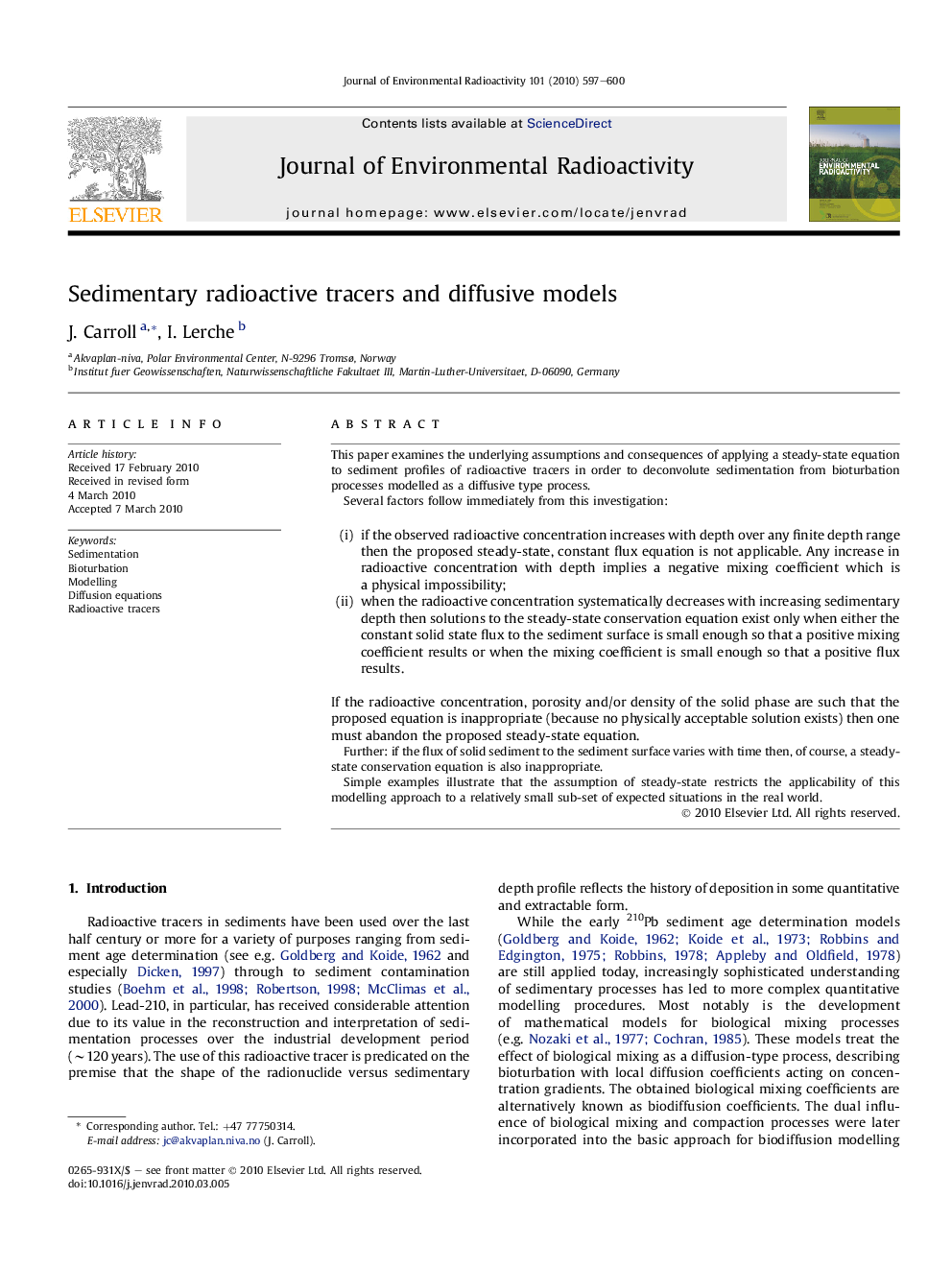| Article ID | Journal | Published Year | Pages | File Type |
|---|---|---|---|---|
| 1738815 | Journal of Environmental Radioactivity | 2010 | 4 Pages |
This paper examines the underlying assumptions and consequences of applying a steady-state equation to sediment profiles of radioactive tracers in order to deconvolute sedimentation from bioturbation processes modelled as a diffusive type process.Several factors follow immediately from this investigation:(i)if the observed radioactive concentration increases with depth over any finite depth range then the proposed steady-state, constant flux equation is not applicable. Any increase in radioactive concentration with depth implies a negative mixing coefficient which is a physical impossibility;(ii)when the radioactive concentration systematically decreases with increasing sedimentary depth then solutions to the steady-state conservation equation exist only when either the constant solid state flux to the sediment surface is small enough so that a positive mixing coefficient results or when the mixing coefficient is small enough so that a positive flux results.If the radioactive concentration, porosity and/or density of the solid phase are such that the proposed equation is inappropriate (because no physically acceptable solution exists) then one must abandon the proposed steady-state equation.Further: if the flux of solid sediment to the sediment surface varies with time then, of course, a steady-state conservation equation is also inappropriate.Simple examples illustrate that the assumption of steady-state restricts the applicability of this modelling approach to a relatively small sub-set of expected situations in the real world.
